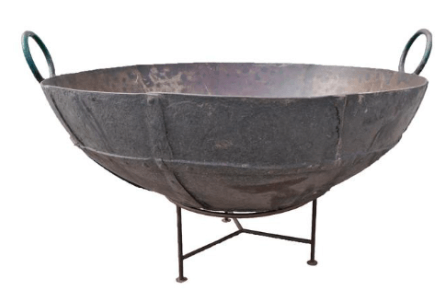NCERT Solutions for Class 4 EVS Chapter 20 - Eating Together Free PDF Download
FAQs on NCERT Solutions for Class 4 Evs Chapter 20 Eating Together
1. Why is Bihu celebrated in Assam?
Bihu is the harvest festival in Assam. It is a very important festival for Assamese. During this festival, they protect and worship plants and crops. They have a big feast with the abundance of crops that they harvest in this season.
2. Why should I choose Vedantu to prepare for my academics?
The subject-experts in Vedantu have designed the solutions and reference notes in a very simple way with lots of worksheets and mock tests. These tests and worksheets will help you to improve your scores in the exams. The teachers in Vedantu are highly experienced and have enormous experience in teaching students. They have done extensive research to come up with authentic and accurate NCERT Solutions that will further act as a resource for students. These solutions will strengthen your concept and clarify all your doubts that will help you in mastering the subject.
3. What is the importance of eating together?
When we eat together then we get to know each other better. We build a strong friendship with others. We share and express our thoughts and ideas with each other. Eating together is a good habit and we must try to eat at least one meal together at home.
4. Can any teacher help me with my studies in Vedantu?
Yes, of course, there are teachers in Vedantu who can help you with your studies. They are very experienced and friendly. They understand the pulse of every child and interact with them one on one. They will clear all your doubts that you have, related to the subjects. You will be in the safe hands of our teachers. They help you to boost your confidence in all aspects of life.
5. What can Class 4 students expect while studying EVS using Vedantu's NCERT Solutions Chapter 20?
When you choose Vedantu's NCERT Solutions for Chapter 20, you must realize that Vedantu is not just an NCERT solution-providing website. Vedantu's Solutions are a multifaceted and comprehensive study aid. Here is why:
These are 100% authentic NCERT solutions.
Vedantu also provides extra explanations, summaries, and important points to increase the understanding of students.
Solutions are perfectly composed for exam preparation.
So when you choose Vedantu, you get an all-around study partner and mentor to guide you through your academic year.
6. Are Vedantu's NCERT Solutions for Class 4 EVS Chapter 20 available for download?
NCERT Solutions for Class 4 EVS Chapter 20 are easily available and absolutely free for download. Here is how you can download these solutions stress-free and without spending a penny:
Go to NCERT solutions for this chapter available on Vedantu’s website.
Scroll down on the next page and look for the option to “Download PDF”. Click on it.
You will be redirected to the page where you will find the link to download the PDF of the required chapter.
The solutions for this chapter are also available on the Vedantu mobile app.
7. Why is Bihu celebrated? How do they prepare cheva rice for Bihu?
Bihu is a festival celebrated in Assam when the new rice crop is harvested. It is a harvest festival that includes extensive community feasts and celebrations. People come together to cook, eat and celebrate. Cheva rice is one of the important meals cooked during Bihu. It is prepared by boiling rice in a big vessel called Tao. A kadhai is put over this vessel which contains soaked rice. It is then covered with banana leaves and soon this traditional dish is ready to eat.
8. What lessons does the chapter “Eating Together” choose to highlight?
Chapter 20 "Eating Together" inculcates the important habit of eating together in students. Eating together with your family members, friends, relatives, and community members makes a simple meal enjoyable and hearty. When people come together to eat, it builds their mutual relationships and traditions. Eating together teaches the students that eating with your friends and family and celebrating with them is a certainly enjoyable act as compared to eating alone. It builds up the traditional values of a society and strengthens the community.
9. What are the different examples of eating together given in Class 4 EVS Chapter 20?
Chapter 20 teaches the students about the importance of eating together with examples. Firstly, a very relatable example of a class party is mentioned where students of a class bring together different foods in the class and celebrate by eating together and playing games. Next, the festival of Bihu is mentioned to give an example of a community celebration. Lastly, the example of mid-day meals in schools is given to exemplify the significance of eating together in school.


















